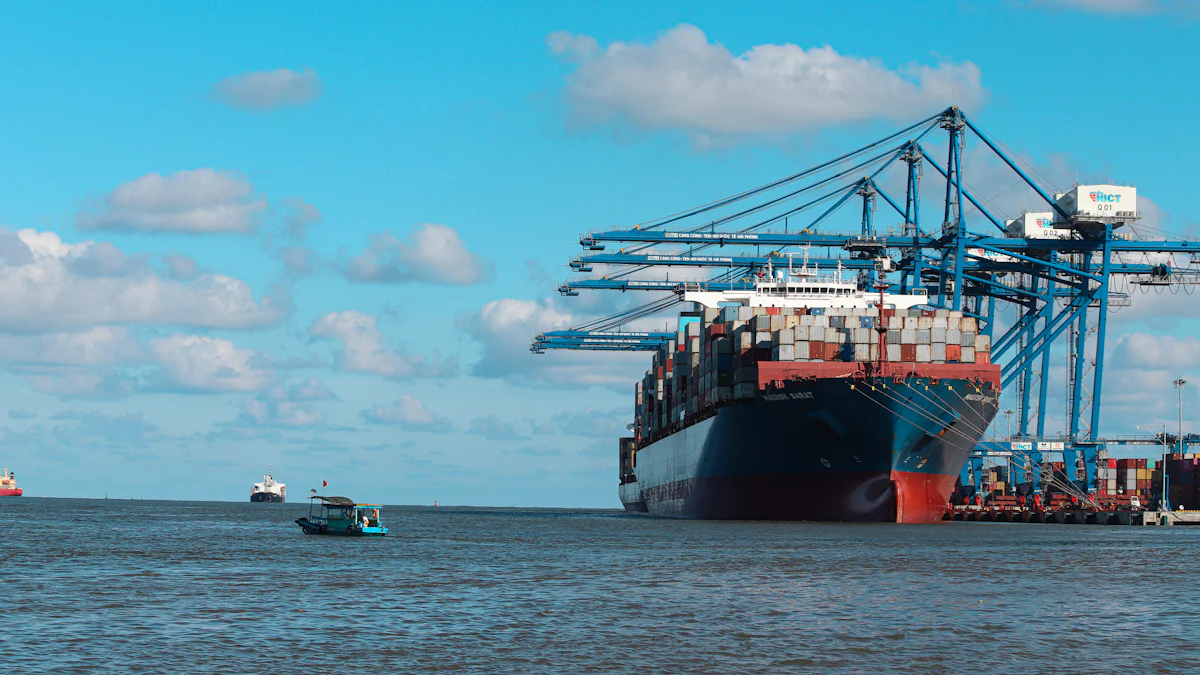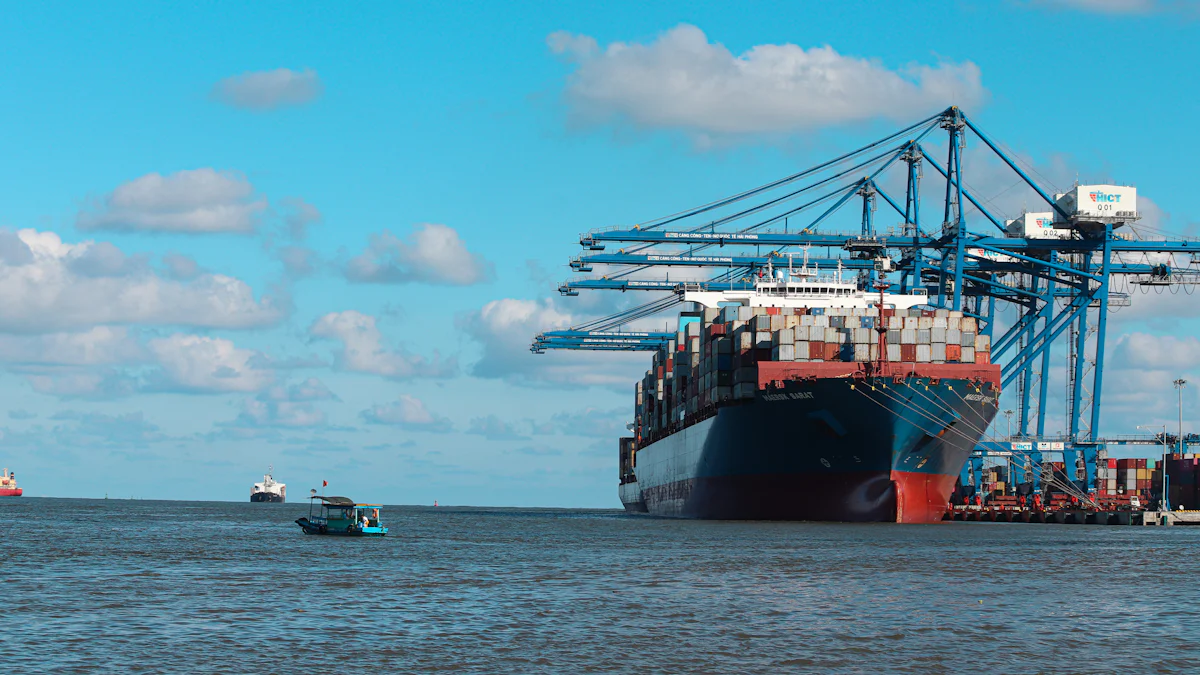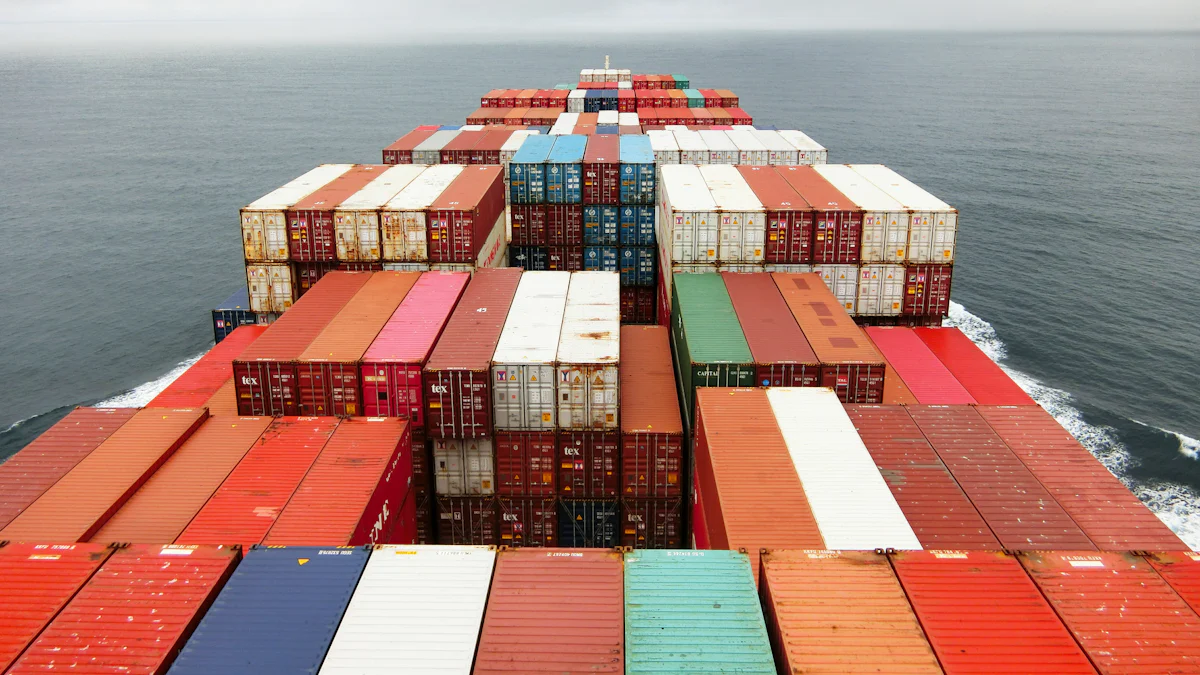Global Ocean Freight Market: Predicting Future Dynamics

The Global Ocean Freight Market plays a pivotal role in international trade, facilitating the movement of goods across continents. Understanding market dynamics is crucial for stakeholders to navigate challenges and capitalize on opportunities. This blog aims to analyze current trends and predict future dynamics, offering valuable insights for industry professionals.
Global Ocean Freight Market: Current State

Market Overview
Key Statistics and Figures
The Global Ocean Freight Market serves as the backbone of international trade, facilitating the movement of goods across continents. Approximately 90 percent of global shipping relies on ocean freight. The volume of cargo transported by ships has doubled from *4 billion tons in 1990 to 11 billion tons in 2021*. The capacity of the worldwide merchant fleet grew by about 43 percent between 2013 and 2021. Seaborne trade volumes more than doubled to reach 10.65 billion tons between 1990 and 2020. In 2020, container ships carried 1.85 billion tons of international seaborne trade.
Major Players in the Market
Several major players dominate the Global Ocean Freight Market. Companies like Maersk, MSC, and CMA CGM hold significant market shares. These companies control 82.5 percent of the market as of Q1 2020. Their extensive networks and advanced logistics solutions contribute to their dominance. These companies invest heavily in technology and infrastructure to maintain competitive advantages.
Regional Analysis
North America
North America plays a crucial role in the Global Ocean Freight Market. The region's ports handle substantial cargo volumes, particularly from Asia. The U.S. remains a key player due to its large consumer market and robust industrial base. Efforts to revitalize domestic manufacturing and ensure supply chain security further boost the region's significance.
Europe
Europe remains a vital hub in the Global Ocean Freight Market. Major ports like Rotterdam and Hamburg facilitate significant trade flows. The region's strategic location connects it to both Asian and American markets. Economic policies and environmental regulations influence the market dynamics in Europe.
Asia-Pacific
Asia-Pacific dominates the Global Ocean Freight Market. Countries like China, Japan, and South Korea lead in shipbuilding and cargo handling. The region's rapid economic growth and industrialization drive high demand for ocean freight services. The "China+1" strategy and shifting production chains to countries like Vietnam impact the market.
Other Regions
Other regions also contribute to the Global Ocean Freight Market. Latin America, Africa, and the Middle East play essential roles in specific trade routes. For instance, Mexico benefits from nearshoring trends as companies move production bases closer to the U.S. These regions offer unique opportunities and challenges in the market.
Global Ocean Freight Market: Influencing Factors
Economic Conditions
Global Trade Patterns
The Global Ocean Freight Market experiences significant influence from global trade patterns. The rise in e-commerce and the demand for faster delivery times have increased the volume of goods transported by sea. Major shipping routes between Asia, Europe, and North America handle a large portion of this trade. The "China+1" strategy has led companies to diversify their manufacturing bases, impacting shipping routes and volumes. Countries like Vietnam and Mexico have seen increased activity due to these shifts in production.
Impact of Economic Policies
Economic policies play a crucial role in shaping the Global Ocean Freight Market. Trade agreements and tariffs can either facilitate or hinder the flow of goods. For instance, the U.S.-China trade war prompted companies to seek alternative production locations. This shift affected shipping volumes and routes. Additionally, government initiatives to revitalize domestic manufacturing have influenced the market. Policies promoting local supply chains aim to reduce dependency on foreign manufacturing, thereby altering trade dynamics.
Technological Advancements
Automation and Digitalization
Technological advancements have revolutionized the Global Ocean Freight Market. Automation and digitalization have streamlined operations, reducing costs and improving efficiency. Automated ports and warehouses enhance cargo handling capabilities. Digital platforms provide real-time tracking and data analytics, optimizing supply chain management. Companies like Windward have introduced solutions that predict disruptions and provide accurate ETA projections. These innovations enable freight forwarders to mitigate risks and improve productivity.
Innovations in Shipping Technology
Innovations in shipping technology have significantly impacted the Global Ocean Freight Market. The development of greener practices has improved efficiency and reduced emissions. Companies invest in eco-friendly ships and fuel alternatives to meet environmental regulations. Advanced logistics solutions, such as blockchain technology, enhance transparency and security in the supply chain. These technological advancements contribute to a more sustainable and efficient market.
Regulatory Changes
Environmental Regulations
Environmental regulations have a profound effect on the Global Ocean Freight Market. Governments worldwide implement stricter emission standards to combat climate change. Compliance with these regulations increases operational costs for shipping companies. However, these changes drive innovation in green shipping technologies. The adoption of cleaner fuels and energy-efficient vessels reduces the carbon footprint of maritime transport. This shift towards sustainability aligns with global efforts to protect the environment.
Trade Agreements and Policies
Trade agreements and policies shape the Global Ocean Freight Market by influencing trade flows and market access. Bilateral and multilateral agreements facilitate smoother trade between countries. For example, the Comprehensive and Progressive Agreement for Trans-Pacific Partnership (CPTPP) enhances trade relations among member countries. Conversely, protectionist policies and tariffs can disrupt trade routes and increase costs. Companies must navigate these regulatory landscapes to maintain competitiveness in the market.
Global Ocean Freight Market: Future Dynamics and Predictions

Market Growth Projections
Short-term Forecasts
Analysts predict a growth rate of around 5% in the first half of 2024 for the Global Ocean Freight Market. This growth stems from increased demand for consumer goods and industrial products. The market will likely experience fluctuations due to geopolitical tensions and economic policies. Companies must remain agile to adapt to these changes. Reliable freight rate forecasts will play a crucial role in maintaining stability.
Long-term Forecasts
The Global Ocean Freight Market size is projected to grow at a compound annual growth rate (CAGR) of 8.02% from 2024 to 2031. This growth will transition the market from USD 11.05 billion in 2023 to USD 18.97 billion by 2031. Technological advancements and sustainability initiatives will drive this long-term growth. Companies investing in green shipping technologies and digital solutions will gain a competitive edge.
Emerging Trends
Sustainability and Green Shipping
Sustainability will become a key focus in the Global Ocean Freight Market. Companies will adopt greener practices to reduce carbon emissions. Investments in eco-friendly ships and alternative fuels will increase. Environmental regulations will push the industry towards sustainable development. The adoption of cleaner fuels and energy-efficient vessels will align with global efforts to combat climate change.
Impact of E-commerce
The rise of e-commerce will significantly impact the Global Ocean Freight Market. The demand for faster delivery times will increase the volume of goods transported by sea. Major shipping routes between Asia, Europe, and North America will handle a large portion of this trade. Companies will need to optimize supply chain operations to meet the growing demands of e-commerce. Digital platforms providing real-time tracking and data analytics will become essential.
Challenges and Opportunities
Supply Chain Disruptions
Supply chain disruptions will pose significant challenges in the Global Ocean Freight Market. Geopolitical tensions and economic policies will affect shipping routes and volumes. Companies must develop strategies to mitigate these risks. The "China+1" strategy will lead to diversification of manufacturing bases, impacting shipping patterns. Governments emphasizing localizing key supply chain elements will further influence market dynamics.
Investment Opportunities
Investment opportunities will abound in the Global Ocean Freight Market. Companies investing in technological advancements and sustainability initiatives will thrive. The integration of AI and big data processing capabilities will revolutionize supply chain management. Multimodal and intermodal transport will offer efficient logistics solutions. Enhanced service offerings will help companies address specific supply chain challenges and enhance competitiveness.
The Global Ocean Freight Market faces a dynamic landscape shaped by technological advancements, regulatory changes, and evolving trade patterns. Companies must adapt to these shifts to remain competitive. The market's growth trajectory, driven by international trade expansion and sustainability initiatives, presents both challenges and opportunities. Industry stakeholders should invest in green technologies and digital solutions to enhance efficiency and reduce environmental impact. Strategic planning and agility will be crucial for navigating future market dynamics.
See Also
Exploring the Latest in Sea Freight Logistics for 2024
Analyzing the Future of Less Than Truckload Freight
Understanding the Effects: Trends in Logistics Risk
